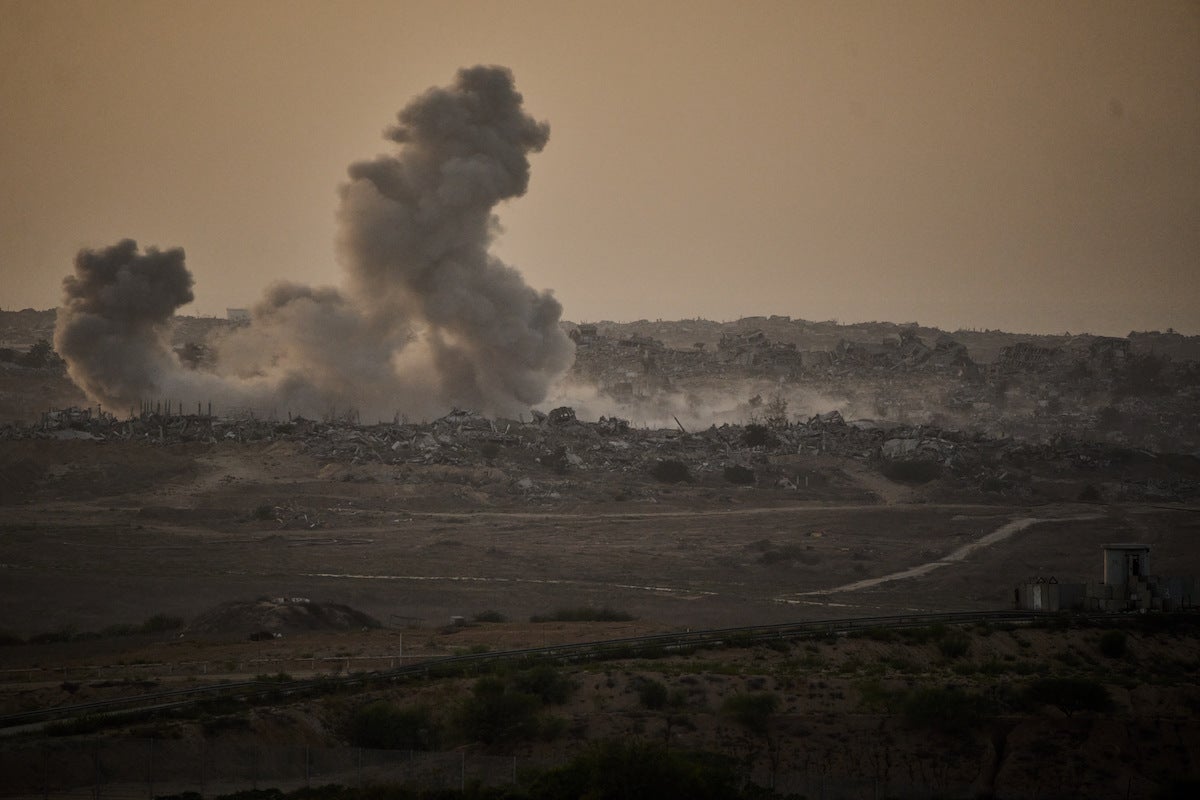Trump’s proposal “cannot be implemented without negotiations,” Mousa Abu Marzouk, a senior Hamas official based outside of Gaza, told the Al Jazeera network.
He said it might be difficult for Hamas to release all the hostages within 72 hours as the proposal dictates, because it could take days or weeks to locate the remains of some of the captives.
Abu Marzouk said Hamas was willing to hand over its weapons to a future Palestinian body that runs Gaza, but there was no mention of that in the official statement. He also took issue with the proposal’s language about ridding Gaza of terrorists, since Hamas considers itself a national liberation movement.
Another Hamas official, Osama Hamdan, told Al Araby television that Hamas would refuse foreign administration of the Gaza Strip and that the entry of foreign forces would be “unacceptable.”
U.S. and Israel seek to pressure Hamas
Israel has sought to ramp up pressure on Hamas since ending an earlier ceasefire in March. It sealed the territory off from food, medicine and other goods for 2 1/2 months and has seized, flattened and largely depopulated large areas.
Experts determined that Gaza City had slid into famine shortly before Israel launched a major offensive aimed at occupying it. An estimated 400,000 people have fled the city in recent weeks, but hundreds of thousands more have stayed behind.
Olga Cherevko, a spokesperson for the U.N. humanitarian office, said she saw several displaced families staying in the parking lot of Shifa Hospital during a visit on Thursday.
“They are not able to move south because they just cannot afford it,” Cherevko told The Associated Press. “One of the families had three children and the woman was pregnant with her fourth. And there were many other vulnerable cases there, including elderly people and people with disabilities.”
Trump wrote that most of Hamas’ fighters are “surrounded and MILITARILY TRAPPED, just waiting for me to give the word, ‘GO,’ for their lives to be quickly extinguished. As for the rest, we know where and who you are, and you will be hunted down, and killed.”
Most of Hamas’ top leaders in Gaza and thousands of its fighters have already been killed, but it still has influence in areas not controlled by the Israeli military and launches sporadic attacks that have killed and wounded Israeli soldiers.
Hamas has held firm to its position that it will only release the remaining hostages — its sole bargaining chip and potential human shields — in exchange for a lasting ceasefire and an Israeli withdrawal. Netanyahu has rejected those terms, saying Hamas must surrender and disarm.
Second anniversary approaches
Thousands of Hamas-led militants stormed into Israel on Oct. 7, 2023, attacking army bases, farming communities and an outdoor music festival, killing some 1,200 people, mostly civilians. They abducted 251 others, most of them since released in ceasefires or other deals.
Israel’s retaliatory offensive has killed more than 66,000 Palestinians, according to Gaza’s Health Ministry, which does not say how many were civilians or combatants. It says women and children make up around half the dead.
The ministry is part of the Hamas-run government, and the U.N. and many independent experts consider its figures to be the most reliable estimate of wartime casualties.
The offensive has displaced around 90% of Gaza’s population, often multiple times, and left much of the territory uninhabitable.
Both the Biden and Trump administrations have tried to end the fighting and bring back the hostages while providing extensive military and diplomatic support to Israel.
